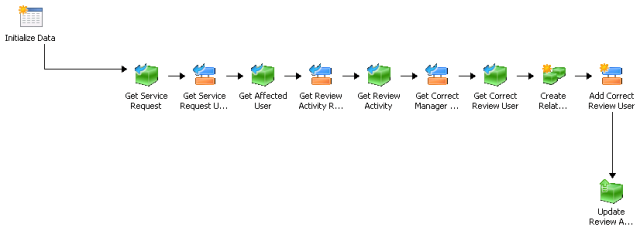One of the most frustrating elements of SCSM is the limited ability to include items from a parent Service Request in Review Activity notifications, and the bug with selecting the incorrect manager as a Reviewer:
- The name of the Affected User of the parent Service Request not being available to insert in the Review Activity notification
- The incorrect line manager being selected for Requests created in the Service Manager console – when Line Manager Should Review is set to True, the manager of the Created By user is selected instead of the Affected User‘s manager
Well, my friends at Olikka and I have developed a solution using Orchestrator that addresses these 2 frustrations. Our Runbook Activity captures the Affected User’s name and inserts into the title of the Review Activity, and adds the Affected User’s manager as a Reviewer in the same Review Activity. Now, when a notification is triggered (when the status of the Review Activity changes from Pending to In Progress), the correct manager is notified, and the person can now easily determine who is making the request.

Orchestrator Runbook
- The Service Request template is created with the Runbook Activity inserted as the first Activity
- A Service Request is created, either in the SM console or via the Self-Service Portal
- The Runbook kicks off and updates the subsequent Review Activity:
- The name of the Affected User of the parent SR is captured and inserted into the Review Activity Title
- The Line Manager of the Affected User is determined and is inserted as a Reviewer
- After the Runbook Activity completes, the Review Activity status is set to In Progress, and the notification workflow is triggered.
- The Manager processes the approval or rejection
- The Review Activity is marked as complete.

Approval Process with Orchestrator
Whilst it is disappointing that we had to use Orchestrator to address what should be standard functionality, but it’s pleasing that a manual workaround has been eliminated.
Here’s the Runbook for you to look at (use in a Dev/Test environment): http://sdrv.ms/Vx2i6K
UPDATE: When you insert the Runbook Activity into a Service Request template, you have to specify the mapping value of the ServiceRequestID (which is the parent work item ID) with the Work Item ID:

Configuring the Runbook Activity












